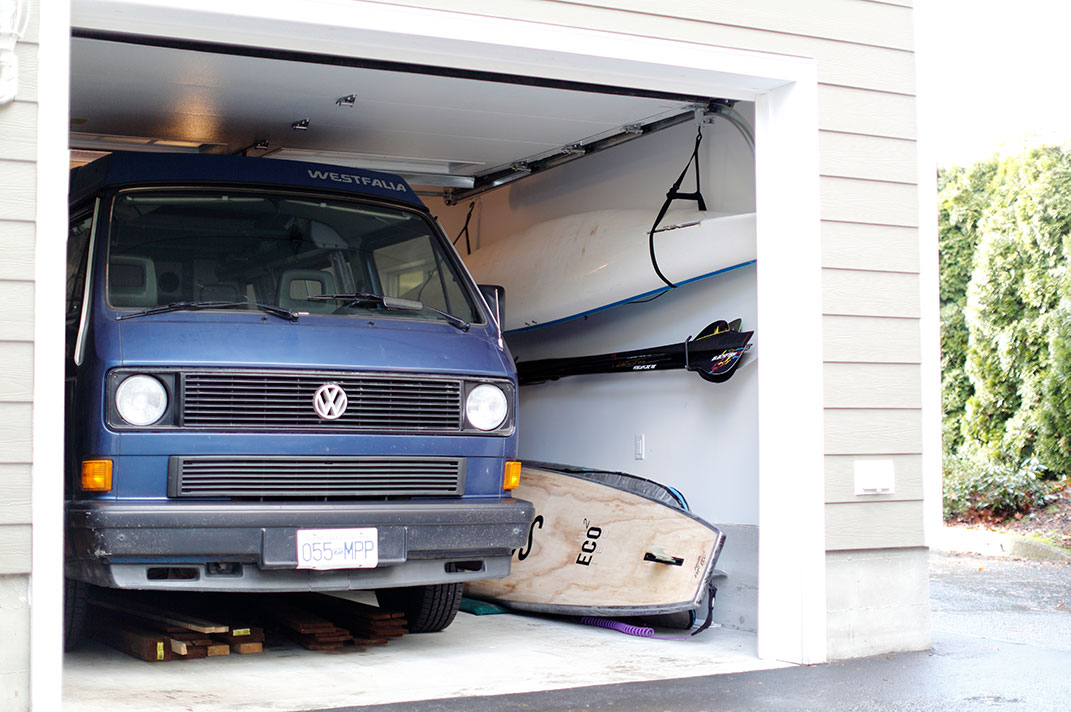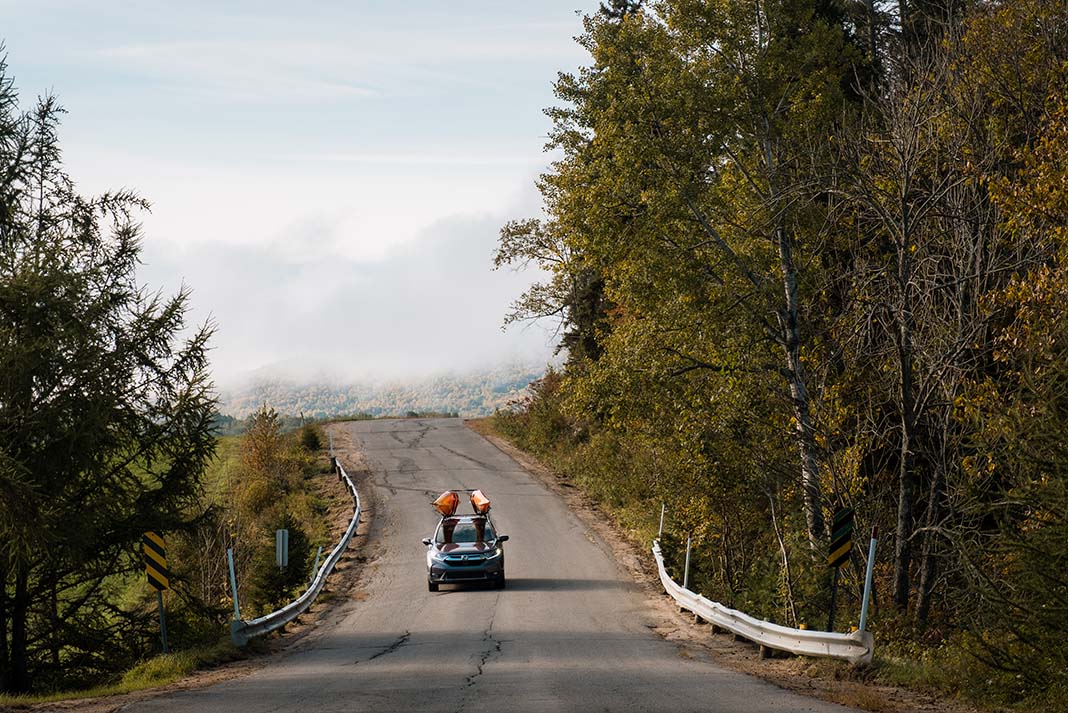A small obstacle like not having a roof rack is no reason to let the world get between you and going kayaking. Yes, roof racks look cool and are great for stacking multiple boats on your car to safely haul down the highway. But you know what? When all you have is the bare roof of a sedan, it’ll do.
Strapping a kayak to a roof rock is the safest and most secure way to transport a kayak, however, whether you are trying to maximize the MPGs of your daily driver, new to kayaking and saving for a setup, borrowing a buddy’s car, or traveling far from home with the sudden urge to explore the waters, transporting a kayak without a roof rack is a realistic option. It can feel like a perplexing puzzle at first, and there are various approaches you can take. But, with a few key items and the steps below, you’ll be cruising to the launch in no time.
How to transport a kayak without a roof rack

What you’ll need to tie down your kayak
-
- Two rectangular foam blocks (firm or closed-cell foam works best)
- Two 12-foot cam straps (cam straps with a buckle and a free tag end are much preferred over ratchet style straps)
- Extra straps or rope for bow line
Step-by-step instructions
- Lay your foam blocks on the center of your car roof so that they are over your doors. They should be approximately two to three feet apart. The space between may need to vary depending on the length and shape of your kayak and the distance between door openings.
- Rest your kayak on the foam blocks. When using a roof rack, I prefer the cockpit to be facing down; however, this doesn’t always work well without a rack, as the kayak may rub on part of the car or not sit correctly, and foam blocks are often shaped to cradle the hull, so having the kayak right-side-up as pictured works well in this scenario.

- Open your car doors to pass the buckle end of the cam strap through your vehicle. We’ve all made the mistake of passing the strap through the windows then realizing we’ve strapped the doors shut, but that’s a no-go when we’re talking safe driving. You can avoid climbing in your vehicle Nascar-style by simply remembering to open the doors.
- Go to the other side of the vehicle and pass the buckle over the top of the kayak.

- Insert the tag end of the strap into the buckle and cinch down the strap. You want the kayak cinched tight enough that it doesn’t want to move when you give it a push and wiggle. If there is more than a few inches of excess strap dangling, you can just close it in the door.

- If there are good hitching points on the frame of your vehicle at the front and back, it’s a sound decision to tie a rope through the bow (at the least) and stern handles for extra assurance your kayak will stay put. You can also buy loops that close in the car hood to create anchors. If you can draw a straight line from the bow to the front of the car that works well to keep it centered. Otherwise, bow lines work best passed through the handle and tied to two points to form a triangle—this keeps the rope from pulling the end of the kayak away from center. You also don’t want the bow or stern line to be overly tight—it’s there as a support. And, as you can see from the setup in the photo (below), if it is overly taut, it will strain the parts of your handle and cause damage over time.

Additional tips for transporting a kayak without a rack
- You can buy foam blocks shaped specifically to cradle a kayak without having a roof rack. These blocks have a notch to either place on cross bars as boat padding, or, if you don’t have a rack, a short strap can go through the notch and around the kayak to fasten them together before strapping to the roof, which secures the boat to the foam.
- Pool noodles work well too. The idea is you want something that provides padding between the car and boat, and provides traction with the boat and roof so the kayak doesn’t slide.
- If you don’t have foam blocks and find yourself needing to strap down a kayak, rolled towels, a wetsuit or a gym mat can all be used instead. They won’t provide as much padding, but will still keep the kayak in place and protect the roof of your car. Just be sure any zippers or other objects are facing away from your vehicle’s paint.
- If your straps are a little too short you can add another short one as an extension for the length you need.
- If you don’t have cam straps at all, a length of rope with a loop tied at one end can be used to accomplish the same idea of cinching down the boat. You’ll have to then keep it taut by finishing with two half-hitches.
- Lastly, if your car has rails on the roof but no crossbars, it is better to pass the strap around these rails than through the car. Also, you may have foldaway crossbars and not know it. For example, many Subarus, like the one pictured in the article, have crossbars that fold away as rails. Double-check your vehicle, and if this turns out to be the case, congratulations, you have a full roof rack!
The method shared here is an inexpensive solution if you are planning to transport a kayak short distances while shopping around for or going without a roof rack altogether. Well-built roof racks do provide a more solid and secure platform for transport and should be considered as the best long term option.
Feature Photo: Joe Potoczak









